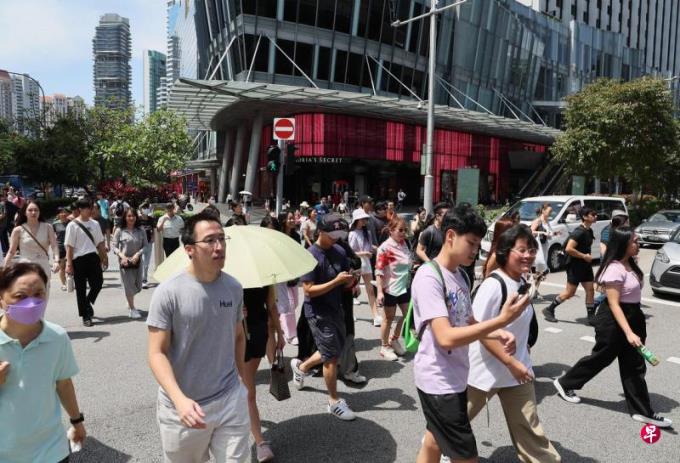
With the original cultural background and learning local culture, new immigrants can not only better integrate into the local society, but also occupy a favorable position on the future global business stage.
In today's globalization, population flow has become the norm.The follow -up issue of cultural integration has become an important social issue facing many countries and regions.In the process, language as a cultural carrier plays a vital role.
Singapore is a multicultural society that attracts immigrants from all over the world.According to the latest data, the integration of new immigrants presents diverse characteristics.In terms of language adaptation, new immigrants from Chinese areas are relatively easy to adapt in Singaporea society in China, but still facing dialects and terms.Singapore Chinese is a local language from Chinese variants.After years, it has evolved some special "mixed" Chinese vocabulary from southern Chinese dialects, Malay and Western English, such as "afraid of losing", "chicken", "Pasar" and "Luo Li".
The characteristics of Singapore Chinese Chinese immigrants face the challenges of Chinese new immigrants.This not only affects their daily life and work, but also hinders their understanding and recognition of Singapore culture.Even if the Chinese immigrants are from Chinese areas, they may be confused due to different dialect or different language habits.For new immigrants with non -Chinese background, learning Chinese is more challenging.Cultural identity is also in uneven state. Some new immigrants actively participate in local cultural activities, while the other part tends to adhere to the original cultural circle.Intergenerational differences are also very obvious. The cultural adaptation of new immigrants is often slow, while their children can integrate into local culture faster.
As for the integration of the workplace, it is easy to obtain recognition and development opportunities in the Singaporea society dominated by the Chinese.However, the limitations of personal social networks still exist. The social circle of many new immigrants is limited to groups of fellow or cultural backgrounds, resulting in relatively limited cross -cultural exchanges.These phenomena reflect that Singapore still faces some challenges in promoting cultural integration and social tolerance.
In order to promote new immigrants to better understand the local Chinese culture, the Singapore Chinese Cultural Center and the Singapore Chinese Cultural Center can jointly organize new immigrants and local residents to participate in cross -cultural collaboration projects to promote new immigrants in emotion and local localCulture establishment connection; on the other hand, the Chinese museum in Singapore, Zongxiang group, and club halls of various dialect ethnic groups can be compared with other Chinese mainland Chinese immigrant society or fellowship, joint symposium or cultural ambassador plan, etc.Activities to promote the understanding of new immigrants in the local and even Nanyang Chinese culture in order to better integrate with the Singapore community.
Government's language policy plays a vital role in the process of cultural integration.A truly inclusive language policy should be more pronounced: First, while paying attention to the education of mother tongue, it is necessary to provide sufficient learning resources for new immigrants to ensure that they have enough opportunities to learn and integrate into the local social environment.Secondly, the implementation of multi -language support in the field of public services can effectively reduce language barriers and enable new immigrants to more conveniently obtain various public services.Furthermore, the government should actively encourage and organize cross -cultural exchange activities to create more opportunities for local language learning and practical use for new immigrants.
The contribution of new immigrants to language and culture
It is worth emphasizing that new immigrants are not only learners of local language and culture, but also positive contributors, injecting new vitality into Singapore's culture.They bring cultural elements in different regions and significantly enhance cultural diversity.New immigrant artists integrate the original cultural background and local elements to create a unique form of artistic expression; they have also become an important bridge connecting cultural exchanges between Singapore and other countries; new immigrant educators with cross -cultural backgrounds, for local language culture teachingBring new methods and concepts, improve the level; new immigrant entrepreneurs combine the business culture of different regions with local practice to promote the innovation of business models; new immigrant writers depict Singapore life from a unique perspective to Singapore's local creative culture for the local creative culture of SingaporeAdd a new chapter.These multiple contributions.It not only enriches Singapore's cultural connotation, but also promotes the innovation and development of society, and shows the positive role of new immigrants in cultural integration.
At the same time, we must also realize that in the context of globalization, mastering language is not only the need for cultural identity, but also the key to improving personal competitiveness.As a hub connecting East and West, Singapore's unique language environment provides unique advantages for new immigrants.With the original cultural background and learning local culture, new immigrants can not only better integrate into the local society, but also occupy a favorable position on the future global business stage.Looking forward to the future, Singapore's language and culture education should develop in a more tolerant, diverse and innovative direction.We look forward to seeing more cross -cultural dialogue platforms and cultivating a way of cross -cultural thinking.Only in this way can we build a harmonious symbiotic society while maintaining cultural diversity, and contribute to our power to build a more open, tolerant and diversified Asian region.
Author Bai Shizhen is a consultant of Alumni Academic Association of Nanyang University and a visiting professor at Singapore Social Science University
Shi Jianzheng is a visiting lecturer and franchising financial technology analyst at Singapore Social Sciences




